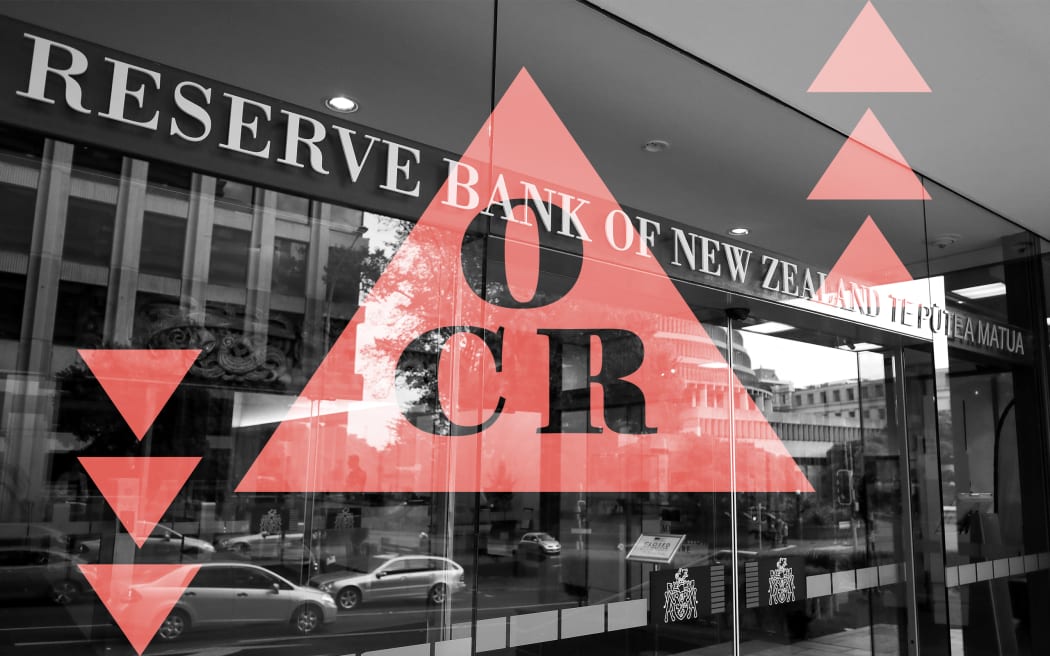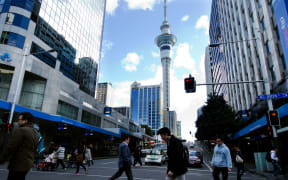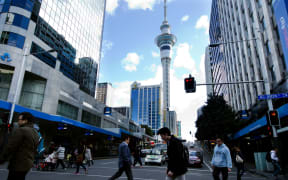
The official cash rate has been held at 5.5 percent since last May. Photo: RNZ
Analysis - The Reserve Bank is expected to stay the course in this week's monetary policy statement with no change to the official cash rate for a seventh consecutive meeting, and a familiar statement.
The official cash rate (OCR) has been on hold at 5.5 percent since May last year, with a consistent message that inflation is slowing but not fast enough and remains particularly stubborn in domestic service industries.
Since the RBNZ's last monetary review in April, inflation had come in a touch stronger than the RBNZ had been forecasting, while the labour market was weaker.
The RBNZ had been dogmatic that inflation was not just headed into its 1-3 percent target band but would stay there before it looked to cut the OCR.
Kiwibank chief economist Jarrod Kerr said there were still concerns over the so-called "non-tradables", such as rents, rates and insurance, which had been growing at an annual rate of close to 6 percent, and less susceptible to the pressure of high interest rates.
"Domestically generated inflation is running too hot. Imported inflation is coming off quickly, but we have an awkward outlook domestically."
BNZ head of research Stephen Toplis said the "real economy" was probably doing worse than the RBNZ expected, and would continue to do so, with unemployment rising quicker and wages falling as a result.
The BNZ's monthly surveys of manufacturing and services show they had been going backwards for much of the year.
"[They] suggest annual GDP growth should remain negative through much of calendar 2024 and even more negative than we are currently assuming."
Similarly, retail sales were about 4 percent down on a year ago, despite the migrant surge, and consumer confidence was at multi-year lows.
The missing link
One of RBNZ governor Adrian Orr's favourite quips is that monetary policy "needs a friend" - and that friend is fiscal policy.
As a rule, how much a government spends - and what it spends on - are key factors in whether the economy and inflation are fuelled or cooled.
Increased spending under the previous Labour government had been blamed for adding to inflation pressures, whereas the National-led coalition's response was to look for significant cost savings through discontinued programmes and job cuts, but bring in fully funded tax cuts.
To date, the RBNZ had been neutral on the new government's actions and stated intentions. Its Budget will not be released until a week after the next monetary statement, which had been seen as another reason for it to be cautious.
"Overall, and given the uncertainty around the fiscal Budget coming out at the end of this month, I see no reason to change the OCR in either direction," Otago University economics associate professor Dennis Wesselbaum said.
A happy new year
All of these factors had led to an overwhelming view that the RBNZ will stick to the script of the OCR staying higher for longer.
Its February forecasts indicated no rate cuts before mid-2025, despite financial markets pricing in cuts as early as August and most definitely by November this year.
But with an economy in recession and showing little sign of perking up any time soon - with "sticky inflation" embedded in key sectors, and an uncertain global outlook - expectations of rate cuts this year had faded.
Jarden Wealth economist John Carran said the RBNZ might make a minor concession to the current environment by tweaking the forecast on rates to suggest potential cuts a shade earlier in 2025.
"But they also won't want to risk letting financial markets get ahead of themselves, and pricing in cuts too early, so I can see why they will remain cautious and conservative."






